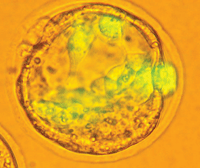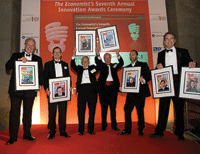
In the News
Satellite Channel on IP Rights
Talal Abu-Ghazaleh, the first Arab satellite channel on intellectual property rights, launched in Egypt this summer with the dual aim of strengthening awareness on IP issues and of giving a clearer picture of the IP situation in the Arab world. Based in Cairo, with offices in most major cities, Talal Abu-Ghazaleh will handle regional and international IP issues, providing a clearer understanding of the legal, economic, technical and social dimensions of IP protection in relation to issues important to the Arab world such as the preservation of biological diversity and the protection of traditional knowledge and expressions of folklore.
The Talal Abu-Ghazaleh channel broadcasts on NileSat in both Arabic and English.
Source: IP Watch
_________________
China Reports Sharp Increase in IP Rights Cases
China’s Intellectual Property Rights Court has reported a steady rise in IP rights cases over the past 30 years, and more specifically since accession to the World Trade Organization in 2001. Between 2001 and 2007, local IP courts nationwide settled 74,200 such cases with an annual increase of 22.92 percent. However, in the first ten months of 2008, those same courts handled over 20,000 cases, a 40 percent rise over 2007.
More and more Chinese feel concerned with IP issues. Mr. Xi Siaming, Vice-President of China Supreme People’s Court, said that IP right cases are drawing wider attention and covering a greater range of rights: patent violations, franchising, domain names, trademarks, etc. The Supreme Court has designated various specialized courts to handle the different types of IP rights cases that may arise. For example, of the 71 courts specialize in patent violations, 38 specifically handle new plant varieties and 43 the layout of integrated circuits. As of October, China had received 4.66 million patent applications and 6.25 million trademark applications.
The National Copyright Administration also reported that China has been increasingly tough in cracking down on IP rights infringement and piracy. Local offices of the Administration dealt with 66,000 infringement cases and confiscated 478 million pirated products from 2002 to 2007.
_________________

A human embryonic stem cell illuminated by green fluorescent protein. (Photo: AFP)
Nobel Prize Winning Jellyfish
This year’s Nobel Prize for Chemistry went to Osamu Shimomura, Martin Chalfie and Roger Tsien for their research into the green glow of a jellyfish, which resulted in the isolation and use of green fluorescent protein (GFP), one of the most important tools in contemporary bioscience research.
GFP was first observed in crystal jellyfish found drifting in the currents of North America’s west coast in 1962. Osamu Shimomura was the first to isolate the protein, discovering its bright green glow under ultraviolet light. Martin Chalfie subsequently demonstrated its value as a luminous genetic marker. Roger Tsien then broadened the spectrum of GFP colors beyond green, enabling researchers to give different proteins and cells different colors and thereby follow their biological processes simultaneously.
GFP can be connected to proteins in cells so researchers can observe movements and interaction that were previously invisible to them, such as the development of nerve cells or the spread of cancer.
Source: cnn.com
_________________
The 7th Economist Innovation Award

Photo: © Economist
In recognition of the great importance of innovation to the economy, The Economist started discerning Innovation Awards to talented, creative individuals in diverse areas seven years ago. This year’s winners, announced in October, were:
- Bioscience: Sir Martin Evans, Director, School of Biosciences, and Professor of mammalian Genetics, Cardiff University, for his work on stem cell research, “knockout” mice, and gene targeting;
- Business process: Jimmy Wales, Founder, Wikipedia, for public collaboration as a form of product and content development;
- Computing and telecommunications: Matti Makkonen, former Executive Vice- President, Senora, for his work on Short Message Service (SMS) text messaging;
- Consumer products and services: Steve Chen and Chad Hurley, Co-founders, YouTube, for their work on developing multi-media content sharing;
- Energy and the Environment: Arthur Rosenfield, Commissioner, California Energy Commission, for his work as an energy efficiency pioneer;
- “No Boundaries”*: Sumio Iijima, Professor, Meijo University, Senior Research Fellow, NEC, for his development of carbon nanotubes;
- Social and Economic: Bill and Melinda Gates, Co-chairs and Trustees, Bill & Melinda Gates Foundation, for their development of a philanthropic support platform, including support for immunization and literacy projects; and
- Corporate use of innovation: Nokia, in recognition of its innovative culture and rapid response to new consumer trends.
*The “No Boundaries” category is for technology-based products or services that do not fit neatly into any of the categories (it includes materials science, nanotechnology and other emerging fields, eg, blue-violet laser).
_________________
Project Launched to Modernize Bangladesh’s IP System
WIPO and the European Commission (EC) launched a project in November aimed at the modernization of the IP system in Bangladesh and at helping the country maximize the benefits of IP protection. The project is designed, through various capacity-building measures, to promote effective management of the IP system, and strategic use of the system in supporting wealth creation and social and cultural development. It will address the challenges faced by Bangladesh in meeting its international obligations and will support the evolution of the national IP system in line with the country’s development objectives.
The project has two main clusters of activities. The first is geared to supporting Bangladesh in modernizing its IP legislation and in strengthening its IP administration systems to improve service delivery, by streamlining, simplifying and, where appropriate, automating administrative functions. The second aims at maximizing the use of IP as a tool for economic, social and cultural development. The project will roll out a public outreach program to promote IP awareness in key sectors including universities, R&D institutions, small and medium-sized enterprises (SMEs), creative industries and the business community. It will also promote IP teaching and education through fellowships, course development and linkages with WIPO’s distance learning programs.
The overriding objectives of the project are to develop and strengthen the IP system and ensure it operates efficiently and effectively, and to promote a culture of innovation and creativity. The project is also expected to foster a favorable environment that will attract foreign investment to Bangladesh and facilitate technology transfer, contributing to the achievement of the country’s overall economic and developmental goals.
The successful completion of the project will enable IP users in Bangladesh - including the business community, researchers, inventors, authors, artists and musicians - to acquire and protect their rights with greater ease and efficiency.
_________________
The WIPO Magazine is intended to help broaden public understanding of intellectual property and of WIPO’s work, and is not an official document of WIPO. The designations employed and the presentation of material throughout this publication do not imply the expression of any opinion whatsoever on the part of WIPO concerning the legal status of any country, territory or area or of its authorities, or concerning the delimitation of its frontiers or boundaries. This publication is not intended to reflect the views of the Member States or the WIPO Secretariat. The mention of specific companies or products of manufacturers does not imply that they are endorsed or recommended by WIPO in preference to others of a similar nature that are not mentioned.